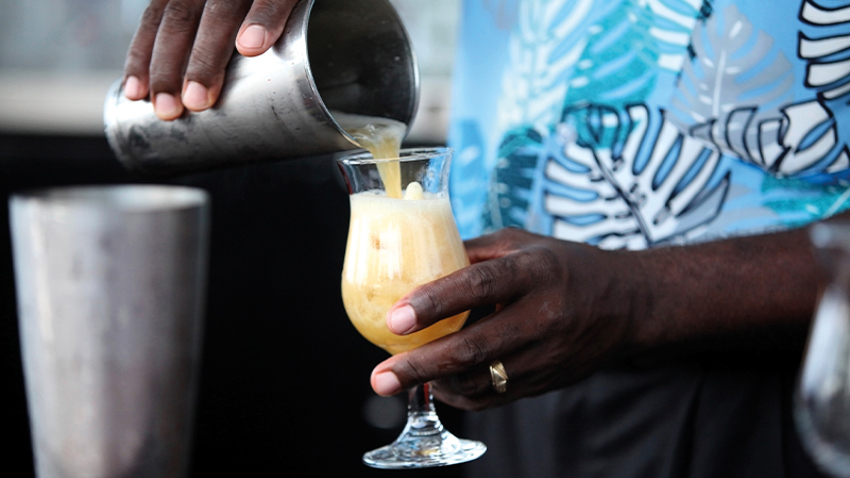
There are a few alcoholic drinks that we don’t even have to question what they are made from - whisky is made from grains, wine from grapes, and cider from apples, but what about rum? Rum is one of those spirits that few people know much about, but many of us enjoy. With a rich and spiced flavour, if rum is your spirit of choice, you may want to familiarise yourself with what it’s made from, and how it’s made.
Rum Explained
First things first, put simply rum is made from sugar cane. In fact, it’s made from 100% cane product. This includes raw cane juice, white or brown cane sugar, cane syrup, evaporated cane sugar and cane molasses. Rum is distilled under 95% alcohol by volume, to legally be a rum in the EU the finished product must be a minimum of 37.5%ABV or 40% in the US, making it a strong spirit. Rum production always starts with sugar cane…

How Rum is made
Mature sugar cane is harvested by hand, typically using a machete in various parts of the world. The cut cane is then transported to the mill as quickly as possible, as cane starts to degrade pretty much as soon as you harvest it. At the mill, it is crushed by a machine to extract the juice. During this process, the leftover pulp is sometimes collected and burned to generate the power to crush the cane. The waste can even be reused to generate power or heat.
There are three possible next steps that can be taken using sugar cane juice:
- The sugar cane juice is fermented and distilled. This is the process carried out in the French West Indies and is the most direct approach that will create the most natural rum.
- Another option is to cook down and concentrate the juice into a syrup, which can then be fermented and distilled. A few distilleries use this method as it allows them to distil all year round, not just during harvest season.
- The third, and final option, is to process the juice into crystallised sugar and molasses. The molasses are then sold on to distilleries to be made into rum, whereas the sugar is sold as a sweetening product. The majority of rums are made from fermented molasses making this the most common option.
The distillation process
The next step is distilling. This is done by heating the fermented liquid in a sealed vessel to around 175 degrees Fahrenheit. This evaporates the alcohol from the liquid. The alcohol is then re-condensed and collected, creating a raw spirit. Distillation can be carried out in either continuous column or pot stills; this will have a huge impact on the flavour of the rum produced. In general, a column still will produce a lighter, delicate style of rum and a pot still will provide a heavier, fuller flavoured rum.
What happens next depends on the end product that each unique distillery is aiming to make. The raw spirit usually has an alcohol content of between 40%-95%. Some rums are bottled and sold at this stage, but most rums are aged to change the character and taste. The type of wood, length of time and climate all affect the flavour of the finished product.
The majority of rum is aged where it is produced, in hot humid climates. Interaction with the wood is accelerated and the ageing process takes less time than a colder climate - whisky in Scotland for example.

Almost all rums are blended with other batches made at the same distillery to create unique flavours. Some rums will be infused with herbs, fruits and spices, or blended with juices to create an altogether new taste, and most rums are diluted with water before bottling to create a 40%-50% alcohol volume.
In the most simple terms, rum is made from sugar cane. It’s a humble beginning for this wonderful spirit, and this forms the base of all rums before they are altered by each unique distiller. Rum as a category offers huge variety and differences in the production processes have a profound impact on the flavour and colour of the finished product. Explore our extensive range of wholesale rum online.

